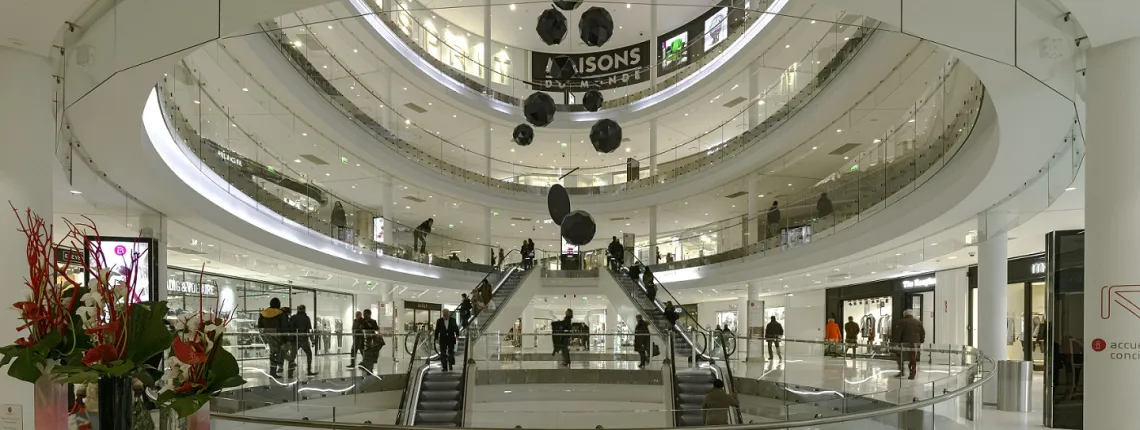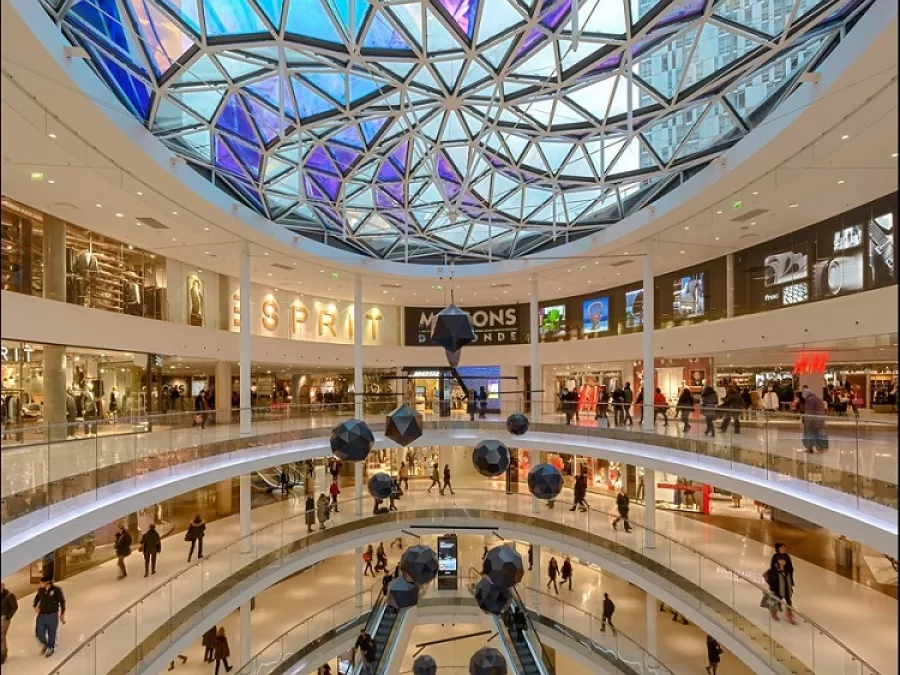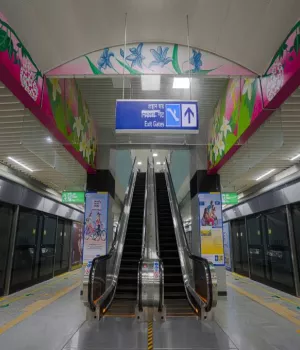The Critical Role of Smoke Barriers

In a fire, smoke is often the first cause of death. Beyond triggering panic, smoke causes serious physical harm, from suffocation and toxic inhalation to burns and unconsciousness. In crowded spaces like malls, hospitals, and transport hubs, it spreads fast, reducing visibility and overwhelming occupants. That’s where a smoke barrier becomes critical. These systems, tested to EN 12101-1, control smoke movement, protect escape routes, and give people more time to get out safely. Let’s understand their role and why they’re vital in busy areas.
Why Smoke Barriers Are Essential in Public Spaces
High-occupancy buildings like shopping centres, transit terminals, and hospitals present some of the toughest challenges during a fire. Their expansive, interconnected layouts and heavy foot traffic mean that smoke can spread unpredictably, cutting off exits, inducing panic, and making coordinated evacuation extremely difficult.
A well-designed fire and smoke barrier system is key to managing these risks. It helps isolate affected zones, directs smoke away from occupied areas, and keeps escape paths functional for longer. These systems not only enhance safety for occupants but also improve response times for emergency personnel. And with fire-rated glazing solutions, they offer protection without compromising on transparency or architectural flow.

Understanding the Risks in Different High-Traffic Environments
Each high-traffic setting presents its own unique fire safety challenges. Factors such as occupancy levels, layout complexity, and accessibility can significantly influence the rate at which smoke spreads and the difficulty of evacuation. There is an added complexity of underground structures with controlled ventilation, that could lead to smoke escaping to higher levels in event of a fire. Therefore, it is important to consider and design for escalator containment, stairwell containment and corridor containment. It is essential to assess these risks to design effective smoke control barriers.
1. Transport Hubs: Airports, Metro Stations, Railway Terminals
Transport hubs are among the most complex public spaces to protect during a fire. With thousands of people in constant motion, even a small fire can become dangerous within minutes. Open layouts and vertical shafts like escalators and elevators can act as channels for smoke, spreading it across terminals and into tunnels. In some cases, smoke may affect ventilation systems and emergency exits, making evacuation difficult. Without proper smoke barrier construction, these spaces remain vulnerable to rapid smoke migration.
2. Shopping Malls and Commercial Spaces
Shopping malls and commercial spaces are high-traffic areas where the spread of smoke can be particularly dangerous. Open atriums, food courts, and interconnected floors provide pathways for smoke to rise and spread quickly, hindering evacuation efforts. Fires often start in kitchens, electrical rooms, or storage areas, where smoke can build up rapidly. Additionally, visitors may not be familiar with evacuation routes, which can lead to confusion and panic. Implementing these barriers helps manage smoke flow and minimises the risk to both people and property.
3. Healthcare Facilities: Hospitals and Care Homes
In healthcare facilities like hospitals and care homes, many patients, especially those in ICUS, operating theatre wards, and elderly care units, cannot evacuate easily during a fire. The presence of high oxygen levels in these areas increases fire intensity and accelerates the spread of smoke. Additionally, smoke can quickly travel along corridors, blocking emergency exits and isolating critical care areas. This makes the use of these barriers crucial in ensuring safe evacuation routes and protecting vulnerable individuals during a fire emergency.
Theatres and auditoriums pose unique challenges due to their enclosed, multi-tiered layouts and dim lighting. In the event of a fire, smoke can rapidly accumulate near the ceiling or above the stage, creating visibility issues and endangering large audiences. Many people may be unfamiliar with exit paths, increasing the risk of panic. Smoke barriers are typically installed above the stage, in ceiling voids, or near exit corridors to contain smoke and guide it toward ventilation systems. This helps keep evacuation routes clear and protects both audience and staff, ensuring that the space remains navigable even in low-light, high-stress situations.
How Smoke Barriers Address Risks
Each high-traffic environment presents unique challenges when it comes to smoke control. A metro station may require rapid smoke extraction from underground levels, while a hospital demands clear corridors and uninterrupted visibility. Smoke barriers are not one-size-fits-all; their design, material, and automation are tailored to the building’s layout and occupancy needs.
Here’s how their features align with different spaces:
- Compartmentalisation for Open Layouts: In shopping malls and transport hubs, where open atriums and interconnected floors allow smoke to rise freely, smoke barrier construction ensures vertical and horizontal containment. This divides large open spaces into safer zones, limiting smoke spread and aiding evacuation.
- Glass Barriers for Visibility in Healthcare Settings: Hospitals and care homes rely on glass smoke barrier systems that maintain sightlines and light flow, especially in intensive care units and wards. These fire-rated barriers support both fire containment and patient safety.
- Standards-Compliant Across All Environments: From metros to malls, certified barriers that meet NBC, ICAO, and NFPA 101 codes ensure legal compliance while enhancing safety performance. This is critical for public infrastructure that must pass regular audits.
- Integrated Technology for Smarter Response: In busy environments, fire and smoke barrier systems that link with alarms and ventilation respond automatically, reducing manual intervention and allowing security teams to focus on evacuation support.
Strengthening Fire Safety With Smoke Barriers
Smoke barriers are essential fire safety systems that do more than just protect buildings; they save lives. Tailored to address the specific risks of each sector, such as transport hubs, shopping malls, and healthcare facilities, these barriers provide crucial protection in high-traffic areas. By investing in certified, tested barriers, you enhance compliance with global safety codes and improve the overall safety and resilience of your building. In the event of a fire, these systems give people the time they need to escape safely and ensure that emergency responders can act effectively.

